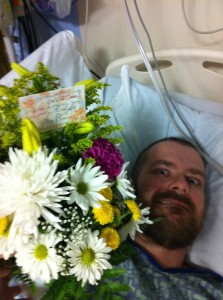As we pass the winter solstice and Big Ben prepares to stroke 2013 out (GEDDIT??!!!), it’s time to fit in a last stroke news digest for this year.

[Y’know, if you haven’t signed up for apoplectic tiny letter email alerts,
you’ve missed Stroke Bloke’s Saturnalia Sending to the Apopostles.
Don’t miss another one. Sign up here: https://tinyletter.com/apoplectic_me]
As is the tradition over the festive period, I’m going to blow the budget of the sixth Digesta Plaga; it’s going to be such a blockbuster that I’m going to have to split it into two parts. Five bucks quid says you can’t guess how it’s gonna finish when we get to the end of part one….
1. Hypertension Guidelines Can Be Eased, Panel Says
I’ve long been fascinated by the distinction between science and art. I like to think of cooking as an art (a splash of this; a dash of that) and baking as a science (I let my yeast get past 130°F, and it reached thermal death point). But much as magic morphs into science when we come to understand it, maybe there’s no bright line distinction. I’d be interested to hear the thoughts of scientist, artist and friend of the blog Paul on the intersection of science and art in classical music composition.

That’s all well and good, but while I’ve long suspected it, I didn’t want it confirmed that medical science is actually an art. The headline news in The New York Times article that heads this section is that, while the population generally should continue to strive for a systolic/diastolic blood pressure reading of below 140/90mmHg, people over sixty are now to be told that their systolic pressure goal should be below 150mmHg. Read deeper, and the medical profession’s been busking it! The article’s full of phrases like there was not strong evidence, did not have a precise figure, recent studies don’t seem to support, [the panel] could not find rigorous studies, and my favourite,
“People thought systolic should be 100 plus your age. That was old folk medicine.”
Magic!
For the estimated millions of people over 60 in the United States with systolic blood pressures between 140 and 150, this may mean being able to avoid multiple-drug cocktails. Which is good, because blood pressure medications carry their own risks. As we know.
The message I’d like readers to take away, though, is that…
…hypertension is a dull disease, but the results of treatment are spectacular. The incidence of strokes has fallen by 70 percent since 1972, and heart failure rates have fallen more than 50 percent.
So if you haven’t had your blood pressure checked for a while, please make it a new year’s resolution to do so. Take it from me, you don’t want to deal with the consequences if you don’t.

2. Rise Of The Cybermen, Part 1 and Part 2
If you haven’t had a stroke, it’s hard to imagine the devastating effect it can have on the affected side of the body. (Also, congratulations!) The combination of atrophy, nerve damage, and neurological damage makes it hard for even the patient to get to grips with the effects. Today, after fifteen months, I looked down to see someone’s hand reaching for my can of soup. “Whothef_’s hand is that?!” I wondered. Then I put two and two together and realized it was mine. That’s left side neglect for you.

(It’s Sarah Jane Smith in The Hand Of Fear.)
Thanks to FriendoftheblogAvi for sharing the first of these stories. about the great things science is doing to ameliorate the debilitating effects of stroke and other traumatic injuries. A team at the University of Minnesota has created a mind-computer interface that allows stroke survivors to “control photorealistic hands by thinking about using their own hands [and] without actually moving their hands at all.” Six stroke survivors in testing wore 3D glasses to give the illusion that their own arms were moving in front of them. The technology is intended to reveal whether patients are activating certain brain regions linked to faster recovery. It can also be used to help patients practice using the areas of their brain that have been damaged by stroke.
I saw the second story on BBC News (both stories are accompanied by great videos, by the way). It’s about a British soldier who had his arm blown off my a rocket-propelled grenade in Afghanistan. Now he has a bionic arm that he can move…

The Austrian surgeons who helped Cpl Andrew Garthwaite had to rewire nerves that would have run from his shoulder to his hand, to run into his chest muscles.
This has meant over the past 18 months, Cpl Garthwaite has had the sensation of a hand growing in his chest…. With his nerve system rewired, he can feel his hand in his chest and by thinking of moving individual fingers, he can move his bionic hand.
When I was an in-patient, I loved using cyber-technology like the Bioness L300 Drop Foot System. This system, made up of a leg cuff, a device resembling a pager, and a remote control, delivers small electrical stimuli in a timed pattern. The idea is that those impulses activate the muscles in the leg to lift the foot to take a step. Not only did this work brilliantly, it set my sci-fi-obsessed mind off on fun little daydreams about being a Cybermen rampaging up Second Avenue in Manhattan.

Regular readers will know that the Cybermen are my favourite Doctor Who villains, notwithstanding their poor use over five decades. I think this is the eleventh blog post in which they’ve appeared. Their real world creator, medical scientist Dr Kit Pedler, came up with them when discussing with his wife the nature of life (and human life in particular) in the context of transplants and prosthetics.
The Cybermen were responsible for one of the best (and best hidden) cliffhangers in the history of the show, so it seems appropriate that you should have to wait for Digesta Plaga #6, Part Two. Therein, Stroke Bloke shall reveal the meaning of life, and save yours.






With very few exceptions every is always busking everything – the trick of science is you have a good estimate of about how wrong you have it, and a path to tighten up the drum track as it were
Of course a good scientist would say a hard and fast bp limit is non scientific. Different folks and non binary. A decade at 139/89 vs a minute at 141/91. Its a guideline.
Speaking of art plus science I’m buying my welder tomorrow!
Yes. I suppose it’s a hangover from the universal primacy of religion to look for certainties in science. Or at least, an underestimation of its tools and uses. And BP limits aren’t only personal, but different from time to time for a person. Has that person maintained HBP for some time in a fashion that would suggest a precipitous drop would be problematic? Do they have aneurysms? What drugs can that person tolerate. So, even over the course of a year, one person may have a number of different targets.
Nice 90° weld. Any thoughts, particularly, on the use of mathematics and science in modern classical composition? Say, if one wanted to write a movement on the theme of a leaf? I’m a neophyte, of course, but that it sounds like that might be a thing? Maybe a future project for you…?
Nice flowers!
Thanks. From Christina. Lovely thought. Though, looking at the picture, I’m surprised I didn’t eat them. Given the vegetarianism and the “soft food” they were feeding me, I probably did.